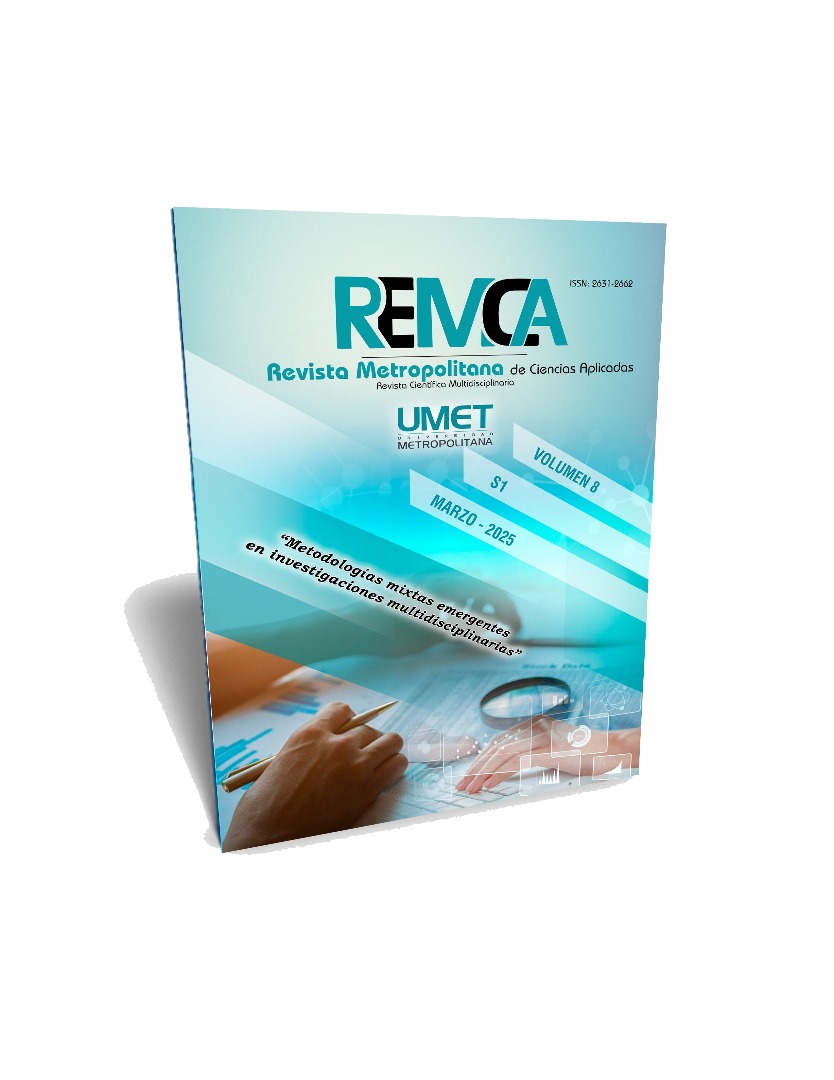Key factors for street calming: Proposed intervention in downtown Quevedo
DOI:
https://doi.org/10.62452/f27nqf16Keywords:
Street calming, road safety, sustainable mobility, public space, tactical urbanismAbstract
The objective of this study was to analyze key factors for street calming and propose an intervention on a street in the center of Quevedo, Ecuador, to improve road safety, sustainable mobility, and the quality of public space. The methodology included a mixed approach, combining literature review, field observation, vehicle counting, and surveys of pedestrians and merchants. The results showed that reducing speed to 30 km/h, along with the implementation of elements such as mini roundabouts, bike lanes, and sidewalk extensions, could decrease traffic accidents and improve coexistence between pedestrians and vehicles. Surveys revealed that 88% of pedestrians would support street calming, highlighting benefits such as reduced noise pollution and increased road safety. It is concluded that street calming is an effective tool for promoting safer, more inclusive, and sustainable urban spaces, prioritizing pedestrians and encouraging active mobility.
Downloads
References
Agencia Nacional de Tránsito del Ecuador. (2022). Visor de siniestralidad, Estadísticas. https://www.ant.gob.ec/visor-de-siniestralidad-estadisticas/
Appleyard, B. (2021). Livable Streets 2.0. Elsevier.
Bray Sharpin, A., Adriazola-Steil, C., Job, S., Obelheiro, M., Welle, B., Tolga Imamoglu, C., Bhatt, A., Liu, D., Lleras, N., & Luke, N. (2021). Low-Speed Zone Guide. World Resources Institute. https://doi.org/10.46830/wrigb.18.00063
Cal y Mayor, R., & Cárdenas, J. (2018). Ingeniería de Tránsito: Fundamentos y aplicaciones. Alpha Editorial.
Domingo, G., & Torner, M. (2012). Evaluación de las Zonas 30 en Europa y definición de una Zona 30 revisada. (Tesis de especialidad). Universidad Politécnica de Catalunya.
Ecuador. Instituto Nacional de Estadística y Censos. (2023). Estadísticas de Transporte (ESTRA) Siniestros de Tránsito Trimestral - I Trimestre, 2023. https://www.ecuadorencifras.gob.ec/documentos/web-inec/Estadisticas_Economicas/Estadistica%20de%20Transporte/2023/2023_SINIESTROS_ITRIMESTRE.pdf
Ecuador. Instituto Nacional de Estadísticas y Censos. (2021). Proyecciones y Estudios Demográficos—Sistema Nacional de Información. https://sni.gob.ec/proyecciones-y-estudios-demograficos
Herrmann Lunecke, M. G. (2016). Instrumentos de planificación y diseño urbano para promover al peatón en las ciudades chilenas. Un estudio comparado entre Chile y Alemania. Urbano, 19(34), 48–57. https://revistas.ubiobio.cl/index.php/RU/article/view/2612
Hurtado, D. (2016). Manual de diseño de calles activas y caminables. https://urbanitasite.wordpress.com/wp-content/uploads/2020/02/hurtado-manual-de-disec3b1o-de-calles-caminables.pdf
National Association of City Transportation Officials. (2016). Guía Global de Diseño de Calles. https://globaldesigningcities.org/publication/global-street-design-guide/endorsement-campaign/
World Health Organization. (2018). Global status report on road safety. https://drive.google.com/file/d/1pNX-LW6lw01SZ-enoLxR-iXHYiS1A0lF/view
Downloads
Published
Issue
Section
License
Copyright (c) 2025 Silvana Lorena Lozano-Zamora (Autor/a)

This work is licensed under a Creative Commons Attribution-NonCommercial-ShareAlike 4.0 International License.
Authors who publish in Revista Metropolitana de Ciencias Aplicadas (REMCA), agree to the following terms:
1. Copyright
Authors retain unrestricted copyright to their work. Authors grant the journal the right of first publication. To this end, they assign the journal non-exclusive exploitation rights (reproduction, distribution, public communication, and transformation). Authors may enter into additional agreements for the non-exclusive distribution of the version of the work published in the journal, provided that acknowledgment of its initial publication in this journal is given.
© The authors.
2. License
The articles are published in the journal under the Creative Commons Attribution-NonCommercial-ShareAlike 4.0 International License (CC BY-NC-SA 4.0). The terms can be found at: https://creativecommons.org/licenses/by-nc-sa/4.0/deed.en
This license allows:
- Sharing: Copying and redistributing the material in any medium or format.
- Adapting: Remixing, transforming, and building upon the material.
Under the following terms:
- Attribution: You must give appropriate credit, provide a link to the license, and indicate if any changes were made. You may do this in any reasonable manner, but not in any way that suggests the licensor endorses or sponsors your use.
- NonCommercial: You may not use the material for commercial purposes.
- ShareAlike: If you remix, transform, or build upon the material, you must distribute your creation under the same license as the original work.
There are no additional restrictions. You may not apply legal terms or technological measures that legally restrict others from doing anything the license permits.




